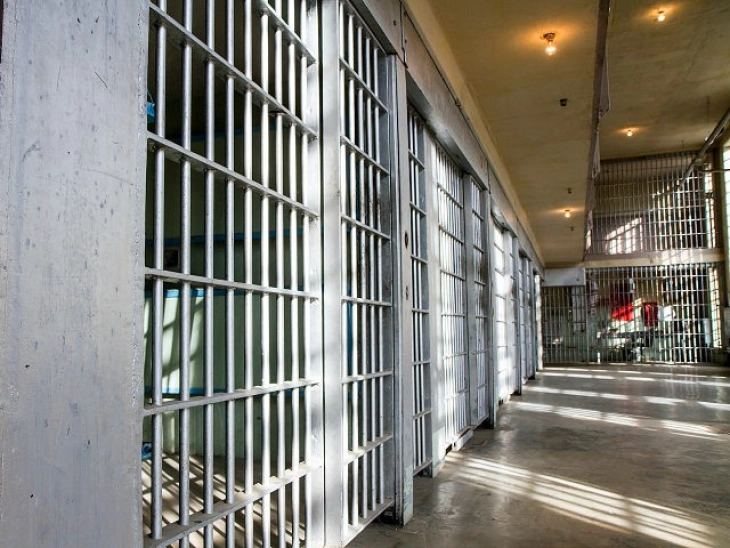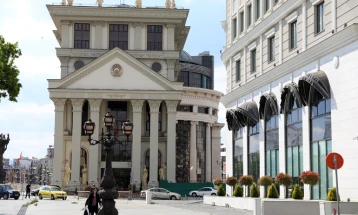CoE penal statistics: North Macedonia’s incarceration rate increased by 25.5%
- The incarceration rate in North Macedonia on 31 January 2023 was 142 inmates per 100,000 residents, an increase by 25.5 percent annually, show data of the Council of Europe CoE’s annual penal statistics for 2023, released Thursday.

Brussels, 6 June 2024 (MIA) – The incarceration rate in North Macedonia on 31 January 2023 was 142 inmates per 100,000 residents, an increase by 25.5 percent annually, show data of the Council of Europe CoE’s annual penal statistics for 2023, released Thursday.
This ranks North Macedonia second out of all Council of Europe members according to the rise in the incarceration rate with Moldavia taking up the top spot, recording an increase by 52.1 percent. Third is Cyprus with an incarceration rate of 24.8 percent, followed by Turkey with 15, Azerbaijan 2ith 12.5, Ireland with 11.7, Montenegro with 11.3, Armenia with 10.6, Croatia with 10.4 and Hungary with 8.7 percent, MIA reports from Brussels.
Lithuania with 8.9 percent recorded the biggest drop of the incarceration rate on 31 January 2023 compared to the same date in 2022 ahead of Estonia with 8.8 percent and Greece – 5.2 percent.
Of the other countries in the region, Bulgaria recorded an increase in the incarceration rate in one year by 8.1 percent, Serbia by 4.2 percent, Slovenia by 2.1 percent and Albania by 1.6 percent. The incarceration rate remained unchanged in Romania.
Generally, the average incarceration rate in Europe marks a rise by 2.4 percent.
Nominally, North Macedonia with 142 inmates per 100,000 residents ranks 15th out of 48 penitentiaries of the Council of Europe member states included in the analysis.
Turkey recorded the highest incarceration rate of 408 inmates per 100,000 residents, followed by Georgia with 256, Azerbaijan with 244, Moldova with 242, Hungary with 211, Poland with 194, Slovakia with 183, Albania with 179, the Czech Republic with 176, Lithuania with 174, Latvia with 172, Montenegro with 168, Serbia with 162, Estonia with 151 and North Macedonia with 142 inmates per 100,000 residents.
The lowest incarceration rates are reported in Finland, the Netherlands, Norway, Germany, Slovenia, Denmark, Switzerland, Armenia, Sweden and Ireland.
The total number of inmates in the countries analyzed in the annual penal statistics on 31 January 2023 was 1,034,876 people. Turkey with 348,265 had the most inmates, followed by Great Britain (90,964), France (72,294), Poland (71,228), Germany (56,294), Italy (56,127), Spain (55,909) and Ukraine with 42,708 inmates.
The average prison density in 37 penitentiaries of the Council of Europe member states annually dropped by 2 percent from 93.5 to 91.6 inmates per 100 available spots. North Macedonia had 101 thus being ranked 10th together with Croatia in terms of prison overcrowding.
Seven countries recorded prison density of over 105 inmates per 100 spaces, which is considered major overcrowding, including Cyprus with 166, Romania with 120, France with 119, Belgium with 115, Hungary with 112, Italy with 109 and Slovenia with 107 inmates per 100 spaces. The top ten, which is competed by North Macedonia and Croatia, also include Greece with 103 and Sweden with 102 inmates per 100 spaces.
Ukraine recorded the lowest prison density with 48 inmates per 100 available spaces, followed by Armenia, Spain (without Catalonia), Estonia, Bulgaria and Lithuania.
Of the other countries in the region, prison density in Turkey is 100 per 100 available places, 78 in Montenegro and 87 in Albania.
The average age of Macedonian inmates is 35, which is below the average defined in the 40 penitentiaries included in the analysis, which is 38.
On average, Bulgaria has the youngest inmates with 33 being the average age, followed by Sweden with 34 and Denmark, Moldova and France, where 35 is the average age, the same as in North Macedonia.
Serbia has some of the oldest inmates with 50 being the average age, followed by Georgia, Italy, Portugal and Spain and Estonia, Albania, the Czech Republic and Norway.
On 31 January 2023, only 5 out of 100 inmates were women. The highest percentage of female inmates was recorded in Cyprus of 9.2 percent, followed by the Czech Republic, 8.5 percent; Latvia and Finland, 7.7 percent; Hungary, 7.4 percent and Spain (without Catalonia), Slovakia and Portugal with 7.2 percent of female inmates. Albania with 1.3 percent had the lowest number of female inmates, followed by Croatia with 1.9, Armenia with 2.6, Azerbaijan with 2.9, France with 3.2 and Georgia with 3.4 percent.
Of the total number of inmates in European prisons, as high as was 27 percent were foreigners. Luxembourg had the highest rate of foreign inmates with 78 percent, followed by Switzerland, Greece, Cyprus, Austria, Spain and Malta, Belgium, Germany, Slovenia, Estonia, Italy and Denmark. The lowest rate of foreign inmates was recorded in the prisons with Romania, 1.1 percent, followed by Moldova, Azerbaijan, Ukraine, Latvia, Poland and Albania.
Almost one third of the inmates in the European prisons on 31 January 2023 were in detention. On this date, 12.3 percent of the people in jails were in detention in North Macedonia, which ranked the country fifth in terms of the rate of detainees. The Czech Republic, Poland, Lithuania and Romania had less detainees, whereas higher rates of detainees were recorded in Albania, Armenia, Luxembourg, Switzerland, the Netherlands and Montenegro.
In 2022, the average length of imprisonment in the European prisons was 10.1 months, more than doubled than the average length of imprisonment in North Macedonia, which is three months. It ranked the country second among the countries with the shortest imprisonment, followed by Switzerland, Luxembourg, the Netherlands and Germany.
The average rate of suicides in the European prisons in 2022 was 5.3 suicides per 10,000 inmates. Latvia with suicide rate of 21.7, followed by Switzerland, France, Scotland, Catalonia, Italy, Belgium, Luxembourg and Slovenia.
The main reason for imprisonment in 45 prisons in the Council of Europe member states were crimes in relation to drug trafficking. On 31 January 2023, 18.5 percent of the inmates were convicted on drugs-related charges, followed by convictions on murder-related charges or murder attempts, theft, robbery, physical assaults, sexual assaults, rape and financial crimes or traffic-related felonies.
Photo: MIA archive











